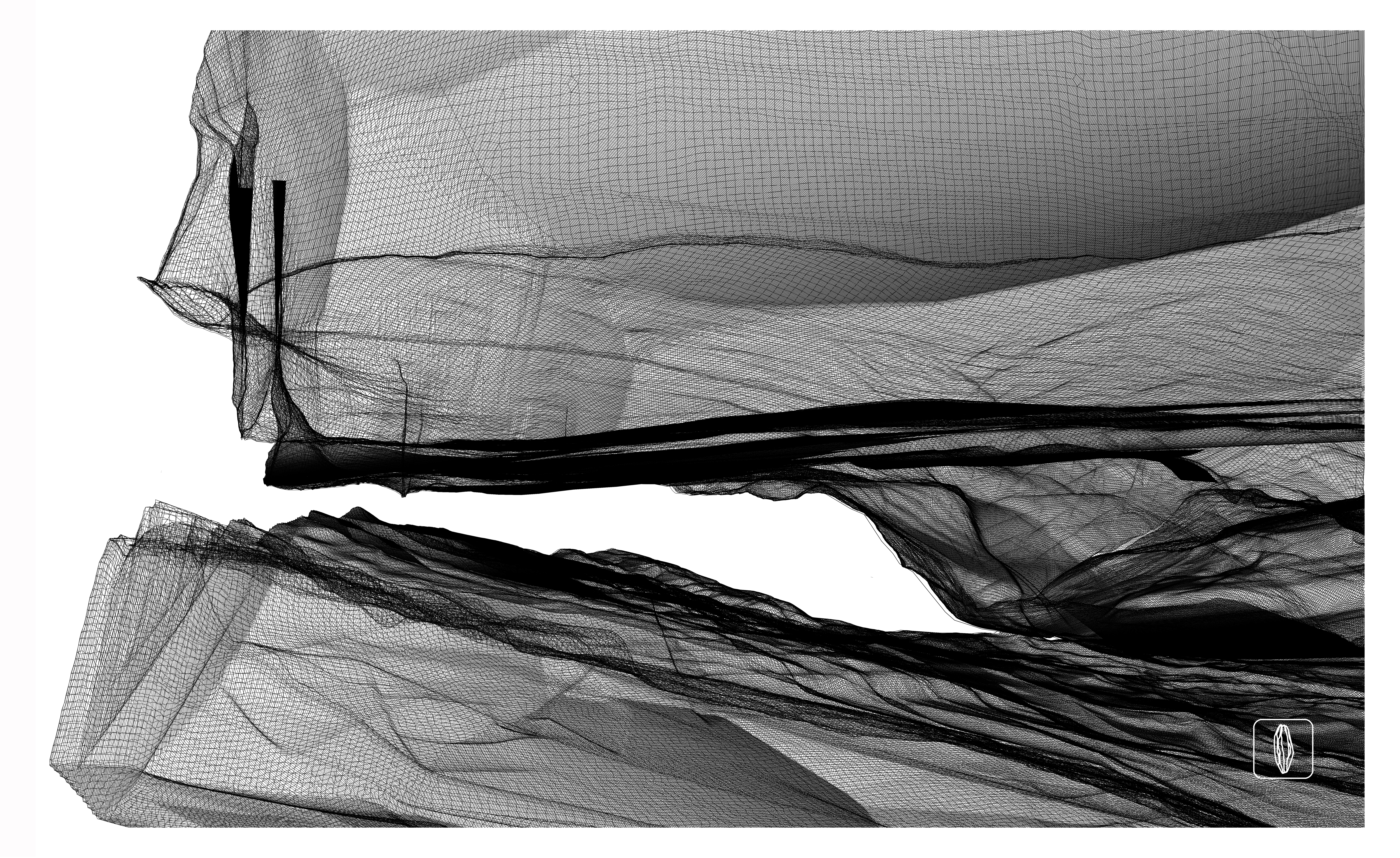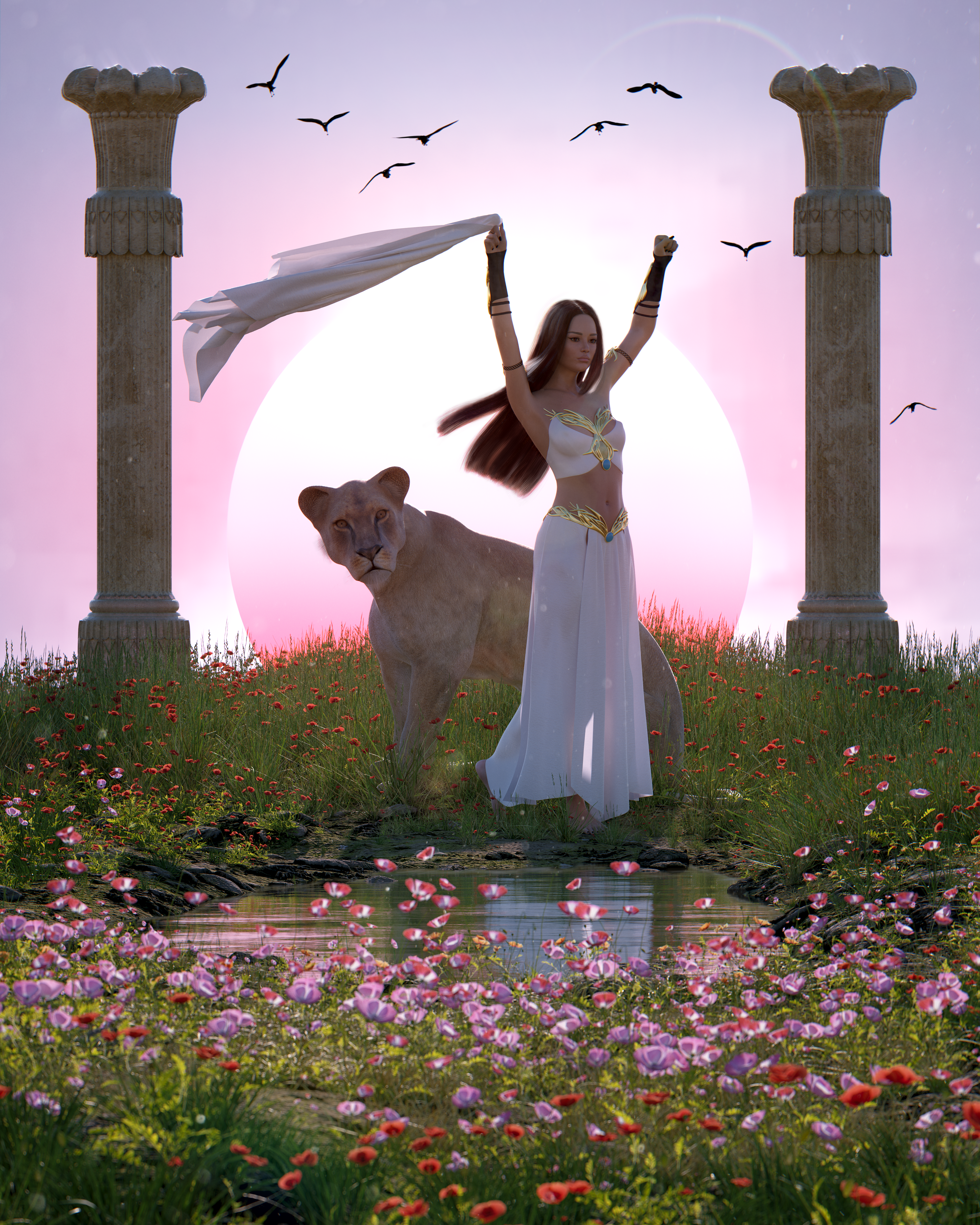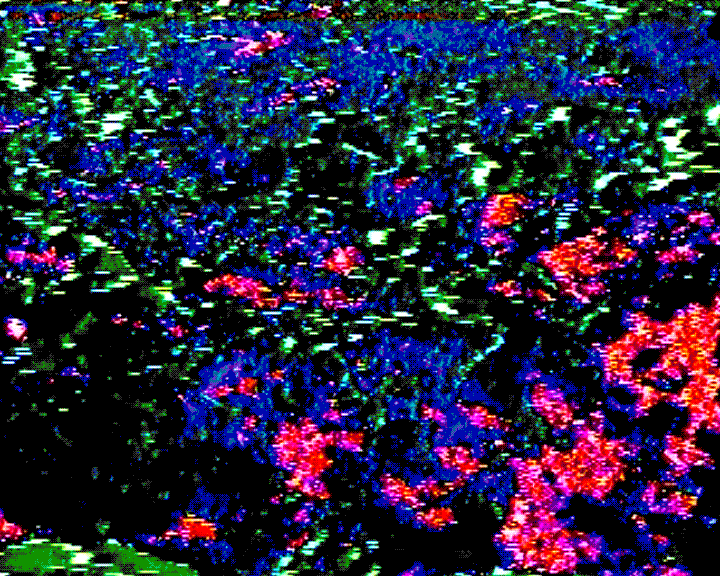
In Conversation with MABLAB
In 2022, many countries within Eurasia felt the ripples–if not the direct impact–of major shifts in the sociopolitical landscape. Russia invaded Ukraine, setting the stage for other leaders to speak of “taking lands back” into their possession. Demonstrations exploded in China and Iran, pushing back against COVID policies and widely unaccepted gender norms, respectively. Amidst the challenges facing the landscapes of Eurasia today, the people of this vast region have shown their fortitude. Politicians became soldiers, families became shelters, and artists continued to tell the stories that helped the rest of the world connect to their struggles, and their aspirations.
MABLAB is an artistic duo from Kazakhstan. Two sisters with professional backgrounds in architecture and arts, Madina and Ainura began their practices from an early age, and spent most of their lives honing skills in various fields of artistic expression. Having studied at the world’s leading art schools, such as Central Saint Martins, London, Gerrit Rietveld Academy, Amsterdam, and Staedelschule Academy, Frankfurt, their love for the arts led them to pursue a career as full-time artists.
Stemming from their Master’s thesis research in architecture, their works explore the themes of architectural Interface. They create their works through a process of experimenting in different mediums. Using 3D hand sculpting and digital hand drawing techniques, they create unique carved architectural spaces, landscapes, textures and metamorphic forms. Being exposed to different cultures and having encountered space and distance in their lives, they transform their experience into artworks that push the boundaries of the perception of space.
In addition to creating art themselves, MABLAB has also curated the exhibition “Mapping Web3. Eurasia.” on SuperRare.
MABLAB: We are from Kazakhstan. Kazakhstan is the world’s largest landlocked country, a transcontinental state at the heart of Eurasia, it is located in Central Asia and Eastern Europe. Our rich historical and cultural heritage includes the era of Nomadic tribes and empires, the Silk Road, the Mongol empire and a recent Soviet past.
At the time we were born, it was a part of the Soviet Union. In our childhood, the Soviet power had collapsed and was replaced by 15 independent states, including Kazakhstan.
Even though the country went through economic failure and drastic changes in the lives of millions of its citizens, we keep fond memories of our childhood. Our parents were struggling to survive in the chaos of the ‘90s, but our home was filled with love and care for each other. During that time we tragically lost our father which was one of the reasons that brought us even closer as a family. Some of the best memories are closely connected with our grandparent’s home, as they were helping our mom to look after us while she was working. Thinking of it now, we understand how blessed we are to have had our parents and grandparents provide us with so much care and love during those difficult times our society went through. The generations before us, including our parents, were focused on surviving and providing care for us, giving us love and directing us towards a focus on our art practice and study, as they understood it was the best way to keep moving forward.
LDR: Where do you live now?
ML: We are now back home in Kazakhstan. We spent more than a decade studying art in art schools abroad such as Central Saint Martins, London, Gerrit Rietveld Academy, Amsterdam, Staedelschule Academy, Frankfurt and Cambridge School of Art, UK. We came back home before the start of the pandemic having the plan to continue our career in art and architecture academia abroad because the art scene in Kazakhstan is not very well-connected to a global west-centric art community. We always had a dream of creating an art studio together although we never came to it before the pandemic. We found ourselves locked inside the country, so we decided to use quarantine as an opportunity to continue our artistic practice as a duo, and later joined the NFT space in June 2021.
After joining the NFT space we realized that this is a great way of continuing our artistic practice together without sacrificing the comfort of being home and having a natural chain of support from our family and friends. For the first time in our lives, we didn’t have to make difficult life choices, spending an enormous amount of effort, energy, and years of life as well as personal finance to be physically present abroad to stay connected with the global art scene in the centralized west-centric environment.
ML: We have been experimenting with different mediums since we were very young. Our experiences and education abroad, as well as our life in Kazakhstan, helped us enrich our work and understand the subtleties between cultures and art practices.
All our work is based on architectural research in depth called project Interface which started as Madina’s Master’s thesis research in Architecture.
The project is developed around the idea of the Gestalt theory. The main idea of our work is the phenomenon of architectural space. We see space as a phenomenon that exists in the universe or anywhere where human perception can wander.
We focus on the idea of architectural space, enhancing the experience and perception of space within the concept of architecture and spatial design, all based on our experimentations and learnings.
Using 3D hand sculpting and digital hand drawing techniques, as well as other multimedia techniques, we create unique architectural spaces, landscapes and metamorphic architectural forms to enhance the moments of interaction, pressure, contact and proximity between the parts of the space.
We have also experienced space and distance in our lives and we focus on transforming our experiences into unique artworks that push the boundaries of the perception of space.
LDR: What art projects are you currently working on or looking forward to working on?
ML: We have been active in the NFT space for quite some time now, and have experimented with different platforms, exhibition spaces (online and offline) as well as outdoor experiences. Each one of those initiatives, from a simple drop on a marketplace to a screen in Times Square, has continued to make us explore space and our relationship to it, whether it is a physical space, an online space or a metaverse space.
Within our concepts, we create architectural space and bring it into an abstract dimension. This abstract dimension in many senses, for us, resembles the idea of cosmic space, a space with no gravity, and no point of reference, it helps us to push the boundaries of perception of architectural space.
Since joining the NFT space, we have been fascinated with the idea of the digital space of Web3. With our own experience of space, in our work and our lives, we feel a great connection with the digital revolution and the opportunities that the technology of Web3 brings to artists and creatives from around the world. That is why some of our work is focused on a concept that explores the landscape of the growing metaverse, where we want to focus on visualizing different stages of the creation and expansion of the digital space of Web3.
We believe that with the expansion of Web3, the digital revolution will redesign the usual perception of space around us. We want to share our experience with the world and let the viewer explore the space and the landscapes we create without physical constraints.
LDR: In your lifetime, how has the socio-political landscape in your country changed, from your perspective?
ML: The oppression of Soviet rule left a big scar on the state of our country. From the famine that destroyed 40 percent of the population caused by decisions made by the early Soviet authorities to the persecution of the cultural elite and suppression of the Kazakh culture including our native language, literature, arts and crafts, and even some environmental catastrophes.
However, after the break of the Soviet state, the power in Kazakhstan was inherited and held by the descendants of the Soviet system. This led the country to fall under the rule of a dictator for 30 years and was only stopped by the dramatic events of widespread civil unrest in January 2022.
The censorship imposed by the dictatorship held the areas of arts and culture under control, which left these areas somewhat disintegrated from the global scene.
LDR: Have you or those close to you experienced these changes in particularly challenging or rewarding ways?
ML: For us and our family, these socio-economic changes became very freeing and allowed us to live and study abroad, pursuing our art career and education. The new political system is very different from that of the Soviet past. Our country is a democratic and constitutional state with free access to information, global markets and digital space. Our economy is an integrated part of the global economy, as well as the whole socio-economical life that is now a part of many international conventions and agreements. The development of our economic system provided many people with opportunities for sustainable growth of society.
However, after more than 30 years of independence from the Soviet state, sharing a mutual past as well as the longest landlocked border with neighboring Russia still presents a challenge to our political, economical and demographic areas. The war in Ukraine put the whole Eurasian region under a lot of economic and socio-demographic pressure, causing high inflation, currency devaluation, and logistical impediments to imports and exports. The businesses in Kazakhstan went through extreme pressure, almost losing their partnerships worldwide because of the broken logistic chains. A major part of our economy and a considerable part of the international supply, the Kazakh oil and gas industry is also experiencing a lot of issues. All this caused a spike in the average cost of living in Kazakhstan. The Russian-speaking media space also became a source of constant propaganda attacks and threats towards Kazakhstan from the current Russian regime, giving an example of the war in Ukraine as to what Kazakhs may expect in the future. Some of the major Russian politicians openly claimed that part of our land should belong to Russia. Meanwhile, millions of Russian citizens left their home country and came to Kazakhstan to escape their current regime and political situation, which added to socio-demographic pressure, also causing a spike in property rent prices.
At the same time, the majority of people in Kazakhstan are genuinely shocked and saddened by the war in Ukraine. A lot of Kazakhs have been supporting Ukraine by any means available, including humanitarian help, voicing our concerns in Russian-speaking media space and actively supporting the Ukrainian refugees who have also arrived in Kazakhstan.
We firmly believe in the freedom of choice and political rights of every person and a country as a whole.

ML: Since the massive civil unrest in January 2022 which entailed the tragic deaths of some of the people who stood up against the dictatorship, the Kazakhs, as a nation, become even more united in our will for civil liberties and political freedoms. The new president has announced political and economic reforms that should bring positive changes to the country’s economic and political lives.
We already feel that these changes affected our freedom of speech and expression, allowing more space for any person to freely express their opinion. We hope this will also bring our culture to a new light and elevate our cultural life, including such areas as arts, literature, new media etc. Kazakhstan is the home country of many talented creatives and intellectuals, many of whom had to choose to bring their careers abroad during the dictatorship era. We think these changes will positively affect the life of the art community in Kazakhstan, and help the artists have more freedom in expressing themselves in different genres of art, including the contemporary art scene.
We also hope our country’s institutional and legal reforms will bring down corruption and use the benefit of having rich natural resources to improve the quality of life of its citizens. In the digital world, Kazakhstan is one of the top two mining hubs for cryptocurrency, so we look forward to our country embracing the rest of the opportunities that the digital revolution has to offer. Technology can empower people and society and pave the way for many talents to bring their concepts to life.
On average, people in Kazakhstan are already living in a highly digitalized environment, so we believe that digital progress can allow us to better integrate into a global society on national and personal levels.
ML: We wanted to say that we are deeply grateful for the opportunities that the digital space of Web3 has provided us. To have been doing art all our lives, since early age, and for the last 30 years, there have always been challenges to continue an art career in a pre-NFT era, especially if you come from outside of western world. We think that the digital revolution enables people from different parts of the world to bring their visions to life, share it with the world, and build communities that empower the voices of artists and creatives. Art and science have always walked shoulder to shoulder, bringing progress into human lives, and to think that we are now a part of this movement at the avant garde of the new wave of technological progress inspires us every day. It inspired us to create our work to explore how intertwined we all are within the landscape of Web3 cultures and to curate the project “Mapping Web3. Eurasia.” to show how our cultural identities can be displayed and interacted within a new global space.

Linda Dounia is an artist, designer, and curator based in Dakar. She is interested in how technology reinforces systems of inequity, investigates the philosophical implications of technocapitalism, and dreams of solarpunk, degrowth, and decolonized futures. She is a curatorial editor at SuperRare.
Art

Curated Conversations: ALIENQUEEN
SuperRare Labs Senior Curator An interviews ALIENQUEEN about psychedelics, death, and her journey in the NFT space.
Tech


Out of the Vault and onto the Chain: the Evolving Nature of Provenance
SuperRare editor Oli Scialdone considers the social experience of provenance and its relationship with community in the Web3 space.
Curators' Choice



Curated Conversations: ALIENQUEEN
SuperRare Labs Senior Curator An interviews ALIENQUEEN about psychedelics, death, and her journey in the NFT space.






